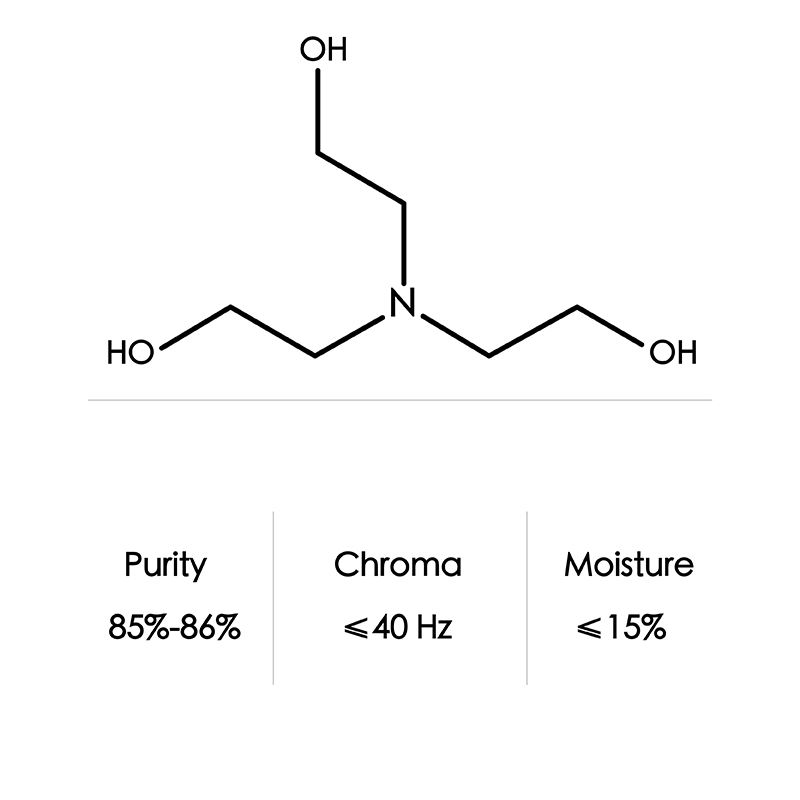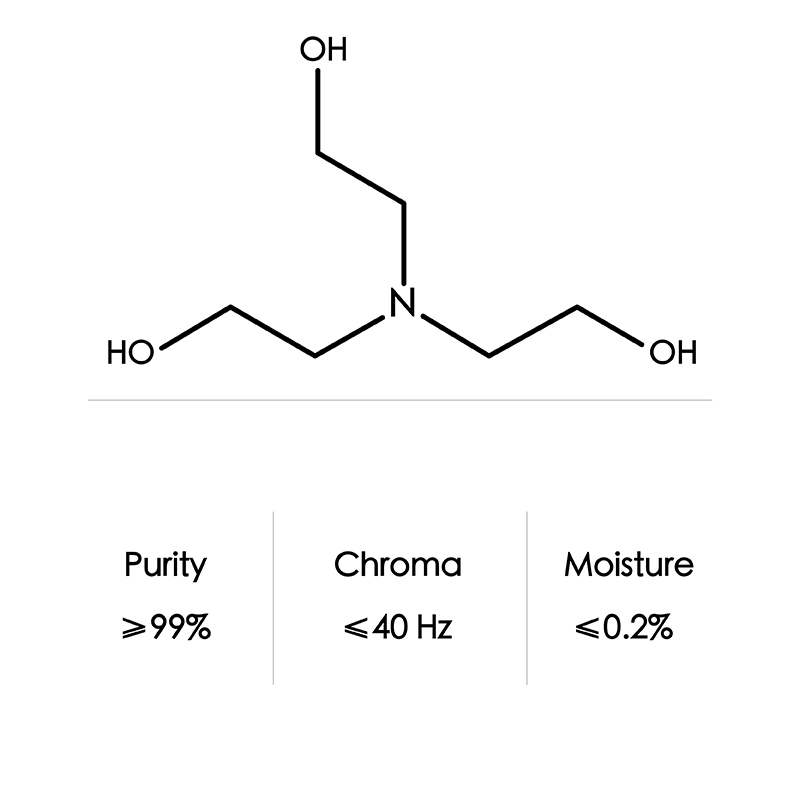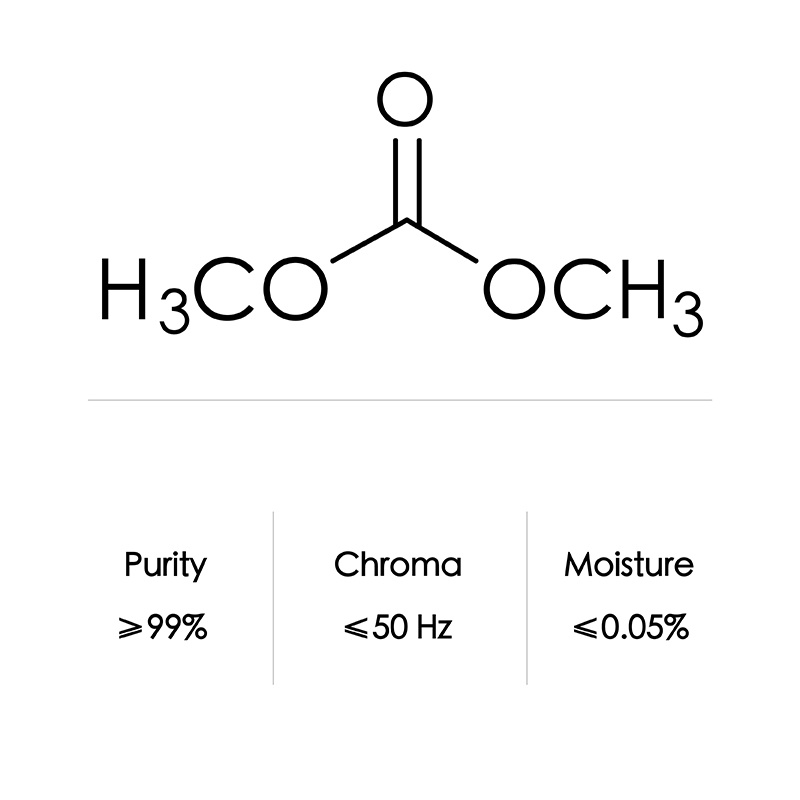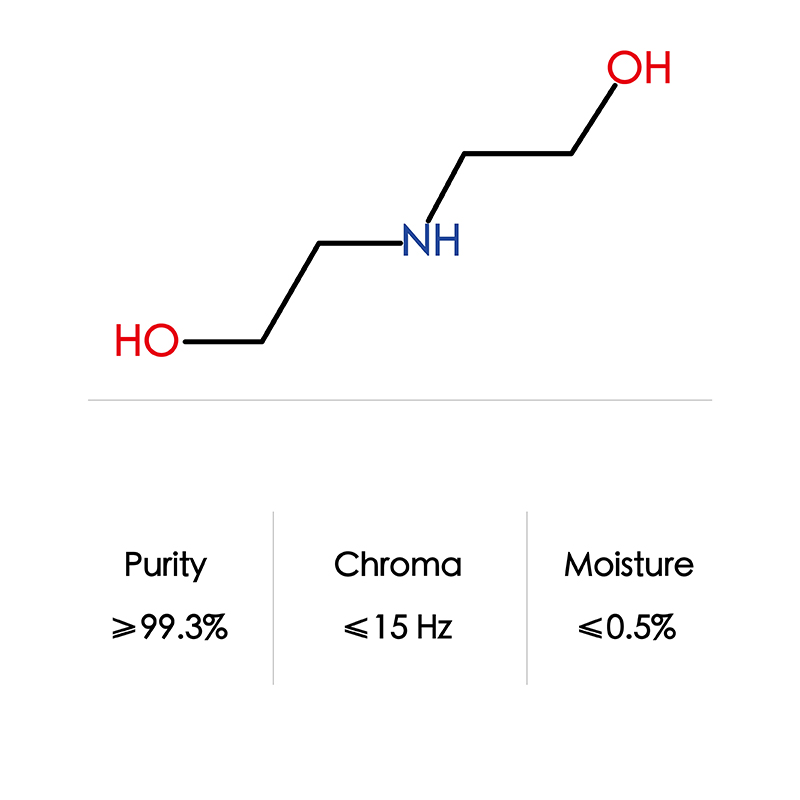
Products
High Purity Material Cosmetic Triethanolamine(TEA 85/99) CAS: 102-71-6
Product Description
Triethanolammonium salts in some cases are more soluble than salts of alkali metals that might be used otherwise, and results in less alkaline products than would from using alkali metal hydroxides to form the salt. Some common products in which triethanolamine is found are sunscreen lotions, liquid laundry detergents, dishwashing liquids, general cleaners, hand sanitizers, polishes, metalworking fluids, paints, shaving cream and printing inks.
Various ear diseases and infections are treated with eardrops containing triethanolamine polypeptide oleate-condensate, such as Cerumenex in the United States. In pharmaceutics, triethanolamine is the active ingredient of some eardrops used to treat impacted earwax. It also serves as a pH balancer in many different cosmetic products, ranging from cleansing creams and milks, skin lotions, eye gels, moisturizers, shampoos, shaving foams, TEA is a fairly strong base: a 1% solution has a pH of approximately 10, whereas the pH of skin is less than pH 7, approximately 5.5−6.0. Cleansing milk–cream emulsions based on TEA are particularly good at removing makeup.
Another common use of TEA is as a complexing agent for aluminium ions in aqueous solutions. This reaction is often used to mask such ions before complexometric titrations with another chelating agent such as EDTA. TEA has also been used in photographic (silver halide) processing. It has been promoted as a useful alkali by amateur photographers.
Properties
| Formula | C6H15NO3 | |
| CAS NO | 108-91-8 | |
| appearance | colorless, transparent, viscous liquid | |
| density | 1.124 g/cm³ | |
| boiling point | 335.4 ℃ | |
| flash(ing) point | 179 ℃ | |
| packaging | 225 kg iron drum/ISO Tank | |
| Storage | Store in a cool, ventilated, dry place, isolated from the fire source, loading and unloading transportation should be stored in accordance with the provisions of flammable toxic chemicals | |
*The parameters are for reference only. For details, refer to COA
Application
| Used as emulsifier, humectant, humidifier, thickener, pH balancing agent. |
| Curing agent for epoxy resin |
In the laboratory and in amateur photography
Another common use of TEA is as a complexing agent for aluminium ions in aqueous solutions. This reaction is often used to mask such ions before complexometric titrations with another chelating agent such as EDTA. TEA has also been used in photographic (silver halide) processing. It has been promoted as a useful alkali by amateur photographers.
In holography
TEA is used to provide a sensitivity boost to silver-halide-based holograms, and also as a swelling agent to color shift holograms. It is possible to get the sensitivity boost without color shift by rinsing out the TEA before squeegee and drying.
In electroless plating
TEA is now commonly and very effectively used as a complexing agent in electroless plating.
In ultrasonic testing
2-3% in water TEA is used as an corrosion inhibitor (anti-rust) agent in immersion ultrasonic testing.
In aluminium soldering
Triethanolamine, diethanolamine and aminoethylethanolamine are major components of common liquid organic fluxes for the soldering of aluminium alloys using tin-zinc and other tin or lead-based soft solders.
Advantage
Product quality, sufficient quantity, effective delivery, high quality of service It has an advantage over a similar amine, ethanolamine, in that a higher concentration may be used for the same corrosion potential. This allows refiners to scrub hydrogen sulfide at a lower circulating amine rate with less overall energy usage.





